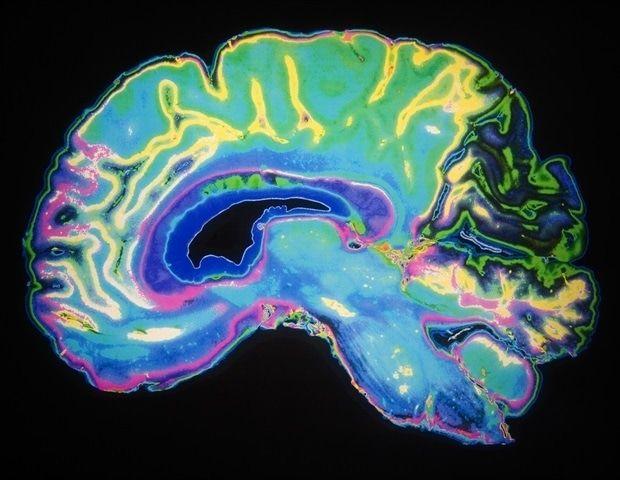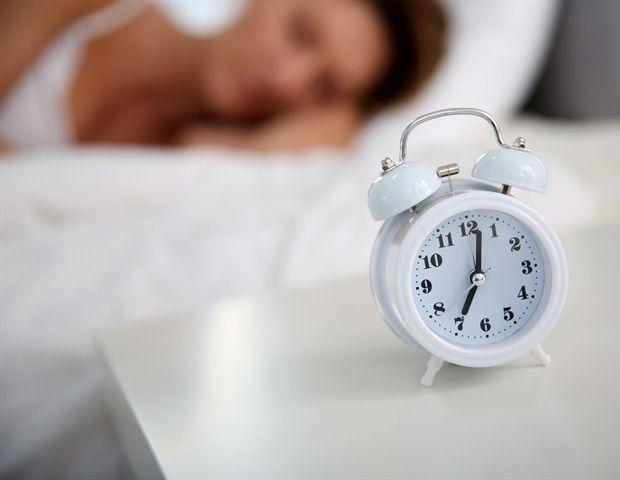Groundbreaking Dream Database Reveals New Insights into Sleep and Consciousness
2 Sources
2 Sources
[1]
Dreams happen beyond REM sleep, analysis shows
Bial FoundationOct 22 2025 An international consortium of researchers has created the largest-ever database compiling records of brain activity during sleep and dream reports. One of the first analyses of the database confirmed that dreams do not occur only during REM sleep, but also during deeper and calmer NREM stages. In these cases, brain activity resembles wakefulness more than deep sleep, as if the brain were "partially awake". One third of a healthy adult's life is spent sleeping, and a significant portion of that time is spent dreaming. Throughout the night, during any sleep stage, subjective conscious experiences, what we call dreams, can repeatedly occur. Interest in dreams dates back thousands of years, from ancient Egypt to ancient Mesopotamia and ancient Greece, and spans many cultures and traditions. While dreams have long fascinated the public, their study holds substantial scientific value, supporting various research areas, including clinical topics (such as parasomnias, like sleepwalking), neurocognitive domains (such as learning and memory), and the basic ones (like the neural correlates of consciousness). Numerous studies have explored what happens in the human brain during dreaming, contributing to major advances in the scientific exploration of human consciousness. However, until now, there had never been a comprehensive integration of data that would allow for broad analysis of findings. In this context, an international consortium of researchers, including Giulio Bernardi (IMT School for Advanced Studies Lucca, Italy), supported by the Bial Foundation, created DREAM - Dream EEG and Mentation, the largest database ever assembled that combines recordings of brain activity during sleep with dream reports. This unique collection enables the study of dreams on an unprecedented scale and with rigorous analysis, addressing one of the field's biggest challenges: the lack of comparable and accessible large data samples. Bringing together multicentred records of electroencephalography (EEG), magnetoencephalography (MEG), and dream reports, DREAM includes over 2,600 awakenings from 505 participants across 20 different studies. It is freely available at monash.edu/dream-database and welcomes contributions from laboratories worldwide. In the article A dream EEG and mentation database, published in the scientific journal Nature Communications, the authors present DREAM and the first analyses of the database, which revealed surprising results: dreams are not exclusive to REM sleep (the phase where the brain is most active and the eyes move rapidly), but also happen during NREM sleep, in its deeper and calmer stages. Interestingly, when dreams occur in NREM, brain activity resembles wakefulness more than deep sleep, as if the brain were "partially awake". Moreover, the researchers applied artificial intelligence algorithms to analyse brain activity patterns before each awakening. Using these data, they were able to predict whether the person was dreaming at that moment, with consistent results. This innovative approach could, in the future, allow for more precise identification not only when we are dreaming, but also the kind of experience we are having during sleep. Giulio Bernardi recalls that "the work presented in the article, coordinated by Monash University (Australia), resulted from the efforts of 53 authors from 37 institutions across 13 countries, and represents a decisive step in the scientific exploration of human consciousness by bringing together and making decades of dream research available in one place". Bial Foundation
[2]
When we dream, does our brain wake up?
An international consortium of researchers has created the largest-ever database compiling records of brain activity during sleep and dream reports. One of the first analyses of the database confirmed that dreams do not occur only during REM sleep, but also during deeper and calmer NREM stages. In these cases, brain activity resembles wakefulness more than deep sleep, as if the brain were "partially awake." One third of a healthy adult's life is spent sleeping, and a significant portion of that time is spent dreaming. Throughout the night, during any sleep stage, subjective conscious experiences, what we call dreams, can repeatedly occur. Interest in dreams dates back thousands of years, from ancient Egypt to ancient Mesopotamia and ancient Greece, and spans many cultures and traditions. While dreams have long fascinated the public, their study holds substantial scientific value, supporting various research areas, including clinical topics (such as parasomnias, like sleepwalking), neurocognitive domains (such as learning and memory), and the basic ones (like the neural correlates of consciousness). Numerous studies have explored what happens in the human brain during dreaming, contributing to major advances in the scientific exploration of human consciousness. However, until now, there had never been a comprehensive integration of data that would allow for broad analysis of findings. In this context, an international consortium of researchers, including Giulio Bernardi (IMT School for Advanced Studies Lucca, Italy), supported by the Bial Foundation, created DREAM -- Dream EEG and Mentation, the largest database ever assembled that combines recordings of brain activity during sleep with dream reports. This unique collection enables the study of dreams on an unprecedented scale and with rigorous analysis, addressing one of the field's biggest challenges: the lack of comparable and accessible large data samples. Bringing together multicentered records of electroencephalography (EEG), magnetoencephalography (MEG), and dream reports, DREAM includes over 2,600 awakenings from 505 participants across 20 different studies, and welcomes contributions from laboratories worldwide. In the article "A dream EEG and mentation database," published in the Nature Communications, the authors present DREAM and the first analyses of the database, which revealed surprising results: dreams are not exclusive to REM sleep (the phase where the brain is most active and the eyes move rapidly), but also happen during NREM sleep, in its deeper and calmer stages. Interestingly, when dreams occur in NREM, brain activity resembles wakefulness more than deep sleep, as if the brain were "partially awake." Moreover, the researchers applied artificial intelligence algorithms to analyze brain activity patterns before each awakening. Using these data, they were able to predict whether the person was dreaming at that moment, with consistent results. This innovative approach could, in the future, allow for more precise identification of not only when we are dreaming, but also the kind of experience we are having during sleep. Bernardi says that "the work presented in the article, coordinated by Monash University (Australia), resulted from the efforts of 53 authors from 37 institutions across 13 countries, and represents a decisive step in the scientific exploration of human consciousness by bringing together and making decades of dream research available in one place."
Share
Share
Copy Link
An international consortium has created DREAM, the largest database of brain activity during sleep and dream reports. Initial findings challenge long-held beliefs about dreaming and sleep stages, revealing that dreams occur beyond REM sleep and that the brain can be 'partially awake' during NREM dreams.

Groundbreaking Dream Database Reveals New Insights into Sleep and Consciousness
In a landmark development for sleep research, an international consortium of scientists has unveiled DREAM - Dream EEG and Mentation, the world's largest database combining brain activity recordings during sleep with dream reports. This unprecedented collection, which includes data from over 2,600 awakenings across 505 participants, is set to revolutionize our understanding of dreams and consciousness
1
2
.Dreams Beyond REM: Challenging Long-held Beliefs
One of the most surprising findings from the initial analysis of the DREAM database is that dreams are not confined to Rapid Eye Movement (REM) sleep, as previously believed. Researchers discovered that dreaming also occurs during Non-Rapid Eye Movement (NREM) sleep, including deeper and calmer stages
1
.The "Partially Awake" Brain
Intriguingly, when dreams occur during NREM sleep, brain activity more closely resembles wakefulness than deep sleep. This phenomenon suggests that the brain enters a "partially awake" state during these dream episodes, challenging our current understanding of sleep stages and consciousness
2
.AI-Powered Dream Prediction
The research team employed artificial intelligence algorithms to analyze brain activity patterns preceding each awakening. This innovative approach allowed them to predict with consistency whether a person was dreaming at a given moment. The potential applications of this technology are far-reaching, potentially enabling more precise identification of not only when we dream but also the nature of our dream experiences
1
.A Collaborative Effort
The DREAM database and its initial findings are the result of a massive collaborative effort. Coordinated by Monash University in Australia, the project involved 53 researchers from 37 institutions across 13 countries. Dr. Giulio Bernardi from the IMT School for Advanced Studies Lucca, Italy, emphasized the significance of this work, stating that it "represents a decisive step in the scientific exploration of human consciousness"
2
.Related Stories
Implications for Multiple Fields
The study of dreams has implications far beyond satisfying human curiosity. It supports research in various areas, including clinical topics such as parasomnias (e.g., sleepwalking), neurocognitive domains like learning and memory, and fundamental questions about the neural correlates of consciousness
1
.Open Access and Future Contributions
The DREAM database is freely available at monash.edu/dream-database, promoting open science and collaborative research. The consortium welcomes contributions from laboratories worldwide, potentially expanding the database and enabling even more comprehensive analyses in the future
1
.As sleep occupies one-third of a healthy adult's life, with a significant portion dedicated to dreaming, this groundbreaking research opens new avenues for understanding human consciousness and the complex workings of the sleeping brain. The DREAM database promises to be a valuable resource for researchers, potentially leading to further discoveries in the fascinating world of sleep and dreams.
References
Summarized by
Navi
[1]
[2]
Related Stories
Revolutionary AI Model Analyzes Full Night of Sleep with High Accuracy in Largest Study to Date
18 Mar 2025•Science and Research

AI-Enhanced Algorithm Revolutionizes Diagnosis of REM Sleep Behavior Disorder
10 Jan 2025•Science and Research

Caffeine's Impact on Sleep: New Study Reveals Age-Dependent Effects on Brain Activity
29 May 2025•Science and Research

Recent Highlights
1
Google launches Gemini 3 Flash as default AI model, delivering speed with Pro-grade reasoning
Technology

2
OpenAI launches GPT Image 1.5 as AI image generator war with Google intensifies
Technology

3
OpenAI launches ChatGPT app store, opening doors for third-party developers to build AI-powered apps
Technology





